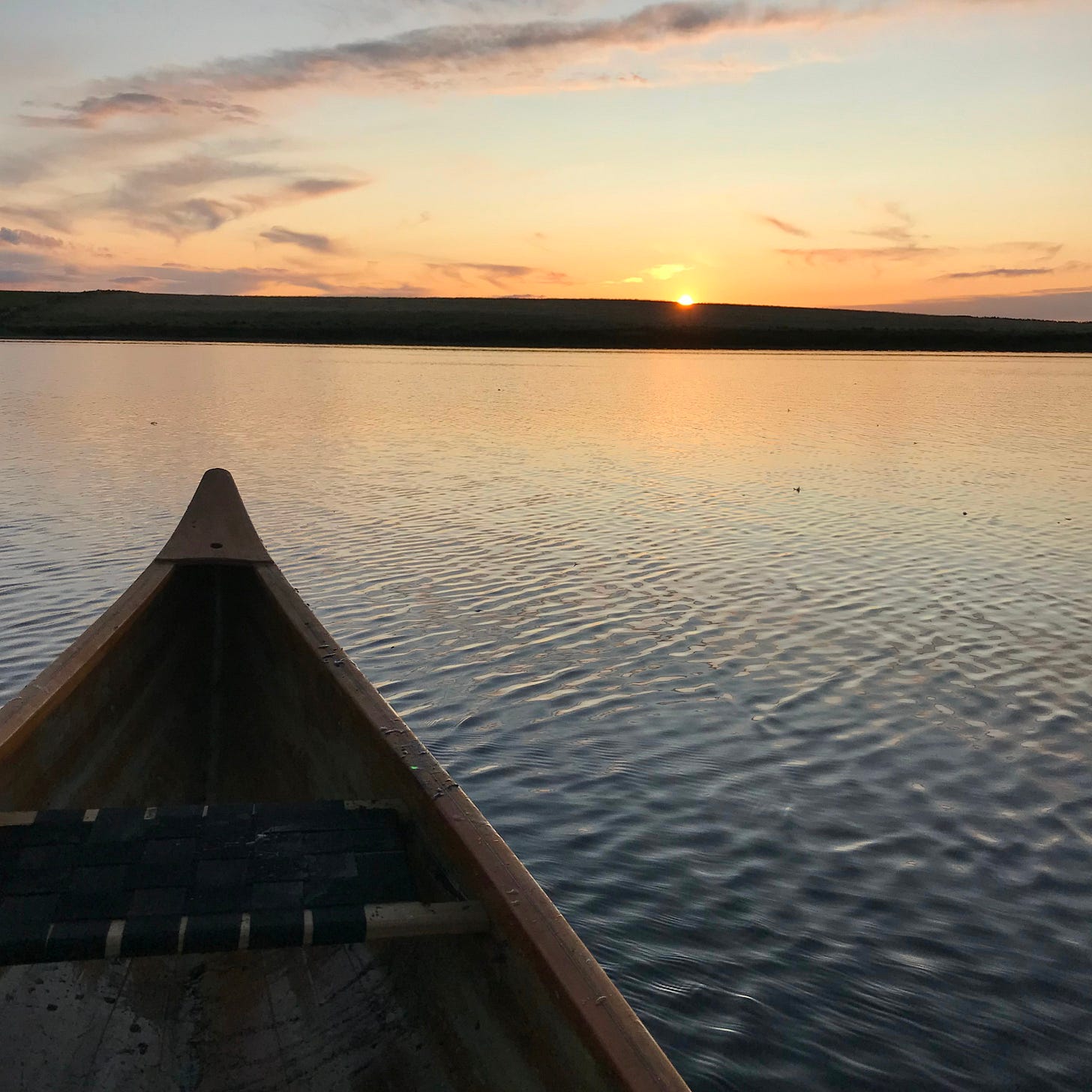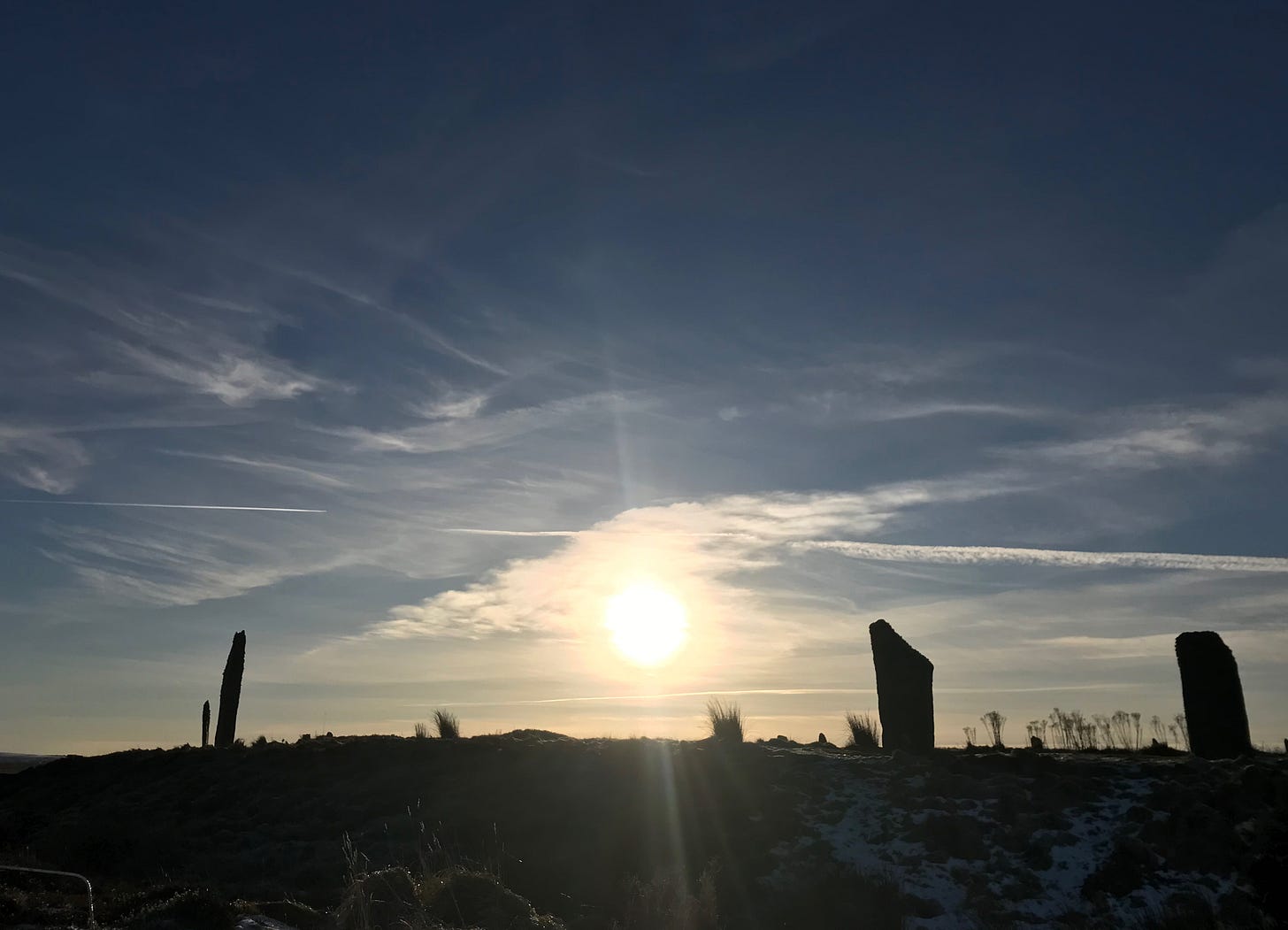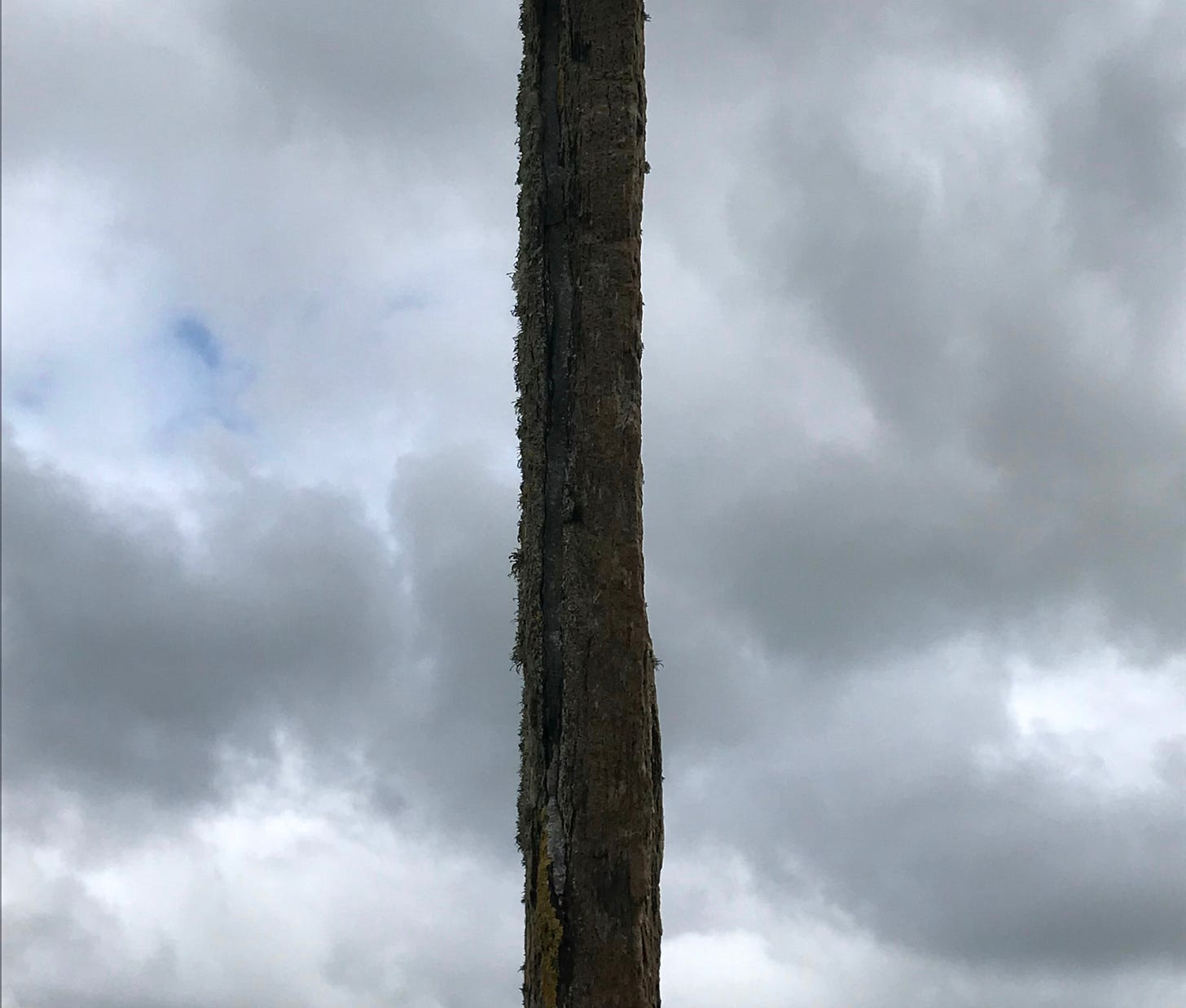Hello friends
Here in the UK the clocks have just changed to British Summer Time. The twice-yearly befuddlement this always causes me brings the sheer artificiality of clock time into sharp relief.
The Spring clock-change always feels like it comes a little late for us here at 59 degrees North. For weeks already my hens have been rising early to loiter outside the bedroom window giving impatient little clucks, waiting for me to get up and feed them. The light has been waking me early too, even though I’m already wearing the blackout mask that helps me to sleep in the light nights of midsummer.
The dramatic seasonal shift between darkness and light that we experience here makes time feel like a fluid, organic thing. It doesn’t tick off in neat units. It ebbs and flows like the tides. It bends and stretches.
The regular clockwork schedules we must live by often feel at odds with this reality, especially when the alarm goes off in the dark of a sluggish winter morning or we draw the bedroom curtains on a sky still bright with daylight.
Here in the north, the turning of the seasons is a physical sensation. It feels like a kind of rolling slide, a disorienting tilt, first towards winter’s darkness, and now careening towards this incoming flood of light. As sunrise and sunset roll further around the horizon, by mid-June the sun will scarcely dip into the sea to our north.
Small wonder then, that our ancestors felt the need to track these movements with heavy blocks of stone, erecting them as solid reassurances, steady anchors in the sliding tides of light and dark. It’s thought that the circle of stones now known as the Ring of Brodgar was erected, some 5000 years ago, as a kind of calendar or clock marking the rotational movements of moon, sun and stars.
Now, instead of stone circles, we cling to the 24-hour clock, to the steady tick of seconds, to our shared timetables, calendars and project timelines. But the notion that time is a single consecutive line of events is a very new idea. Visual timelines ordering historical events one after the other only began to appear in the 18th Century. A single ‘railway time’ was only established in the UK in 1840, and world time zones were only agreed in 1900. Clocks began to appear everywhere in the 19th century, on station platforms, town squares, factories and classroom walls, on every mantelpiece. In every pocket, a watch.
Now time ticks by on our phones, computers, ovens, televisions, cars. We see time flow onwards, a uniform and universal succession of numbered units. Events follow one another in an orderly succession. The past is fixed, the future, open. It seems obvious. Time has flow and direction. ‘Now’ is the same moment everywhere, as if we could take a snapshot of the whole universe.
And yet, to a physicist, all this is false, an illusion like the seeming flatness of the earth. It’s a fiction that derives from our own faulty and incomplete perspective. As the physicist and author Carlo Rovelli has so eloquently explained, there is no one, singular uniform time, only a multitude of times that exist in relation to each other.
Apparently time passes faster on a mountaintop than it does at sea level, where time is denser and passes more slowly. Any large mass slows time down around itself. Things fall ‘down’ because of this time gradient caused by mass. In interplanetary space, away from the mass of planets, nothing falls. Water flows down this gradient of time. It doesn’t flow in time, or like time, but towards where time lies thickest.
Monolithic ‘Father Time’ melts into an infinite spider’s web of multiple times and there is no one Now that holds for all places in the universe.
Thankfully, there are simpler, more accessible ways to understand this truth than grappling with theoretical physics.
For
, being in the sea offers her a welcome loosening from the grip of linear, clock time. “The human experience of the sea makes us perceive time in strange ways. It bends.” For her, this is a necessary respite that allows her, upon returning to the land, to stay present and attentive to a natural world that’s being ravaged.Jeanette Winterson argues that, in spite of the pressures of daily life, we need to embrace a more elastic sense of time, by taking time to do nothing, to hang out with a friend, to be with ourselves, to be with our kids, to do nothing much, to loaf, to draw, read, or walk. It’s a work of self-reclamation. She writes: “Nothing in our society recognises or prioritises the simple need of the human mind to flow.”
But I don’t think there is anything simple about our deep need for the quiet absorption of ‘flow’. I think of this as a more active state than the one Winterson describes. As Mihalyi Csikszentmihalyi, the psychologist who first coined the term ‘flow state,’ discovered, each time we reach this state through acheiving a moderately challenging goal we have ourselves chosen – learning to play a new piece of music, writing a poem, knitting a sock – we become stronger, happier, more confident, more integrated. Indeed, he argued that a life of deep engagement with the balanced challenge of creative work will shape us into authentic, independent-minded, clear thinking, self-directed, free citizens.
And not everybody wants that for us.
Something worth remembering, the next time you reach idly for your smartphone.
So, it seems that there is no one ‘Now’ and no one, singular, uniform, steadily ticking ‘Time’.
But there is before and after, a network of interrelated events of cause and effect. This endless change is diffuse, scattered, multitudinous, a grammar not of being but of becoming. The world is not made up of things. It’s made up of happenings, processes, occurrences, an infinite network of events that don’t last but undergo perpetual transformation.
I find my own time-anchor in drawing. Its quiet rhythms and self-directed challenges allow me to feel how time moves, and also to see it. There is a before and an after.
The blank canvas, and the finished painting.

The Life Raft Co-Creating Community
Make time for your creative work. Join us for our weekly creative co-working session on Zoom. It’s very simple. We just say hello at the start and say what we plan to work on and then leave our cameras on and work together in companionable silence. We start at 3pm UK time and finish around 4.30pm. If you come late and we’ve already begun work it disrupts the quiet focus, so do try and join us promptly or you won’t be admitted, sorry! Every Monday I’ll share a recording to the paid subscriber chat.
That’s all for this time!
Sam
Gathering the flow of attention
The state of flow enlarges our self by immersing it in something larger.












The before and after, indeed. And the liminal space throughout.
Wonderful, as ever, including the spider perspective. I love how that looks, interacting with your creation... A collaborator.
The watch on my wrist remains at GMT for now. Like an experiment, allowing me to live in two timezones.
I honestly can't decide whether I prefer to listen to, or to read your essays. I usually end up reading along your audio! This brings me back to happy childhood times. 🥰